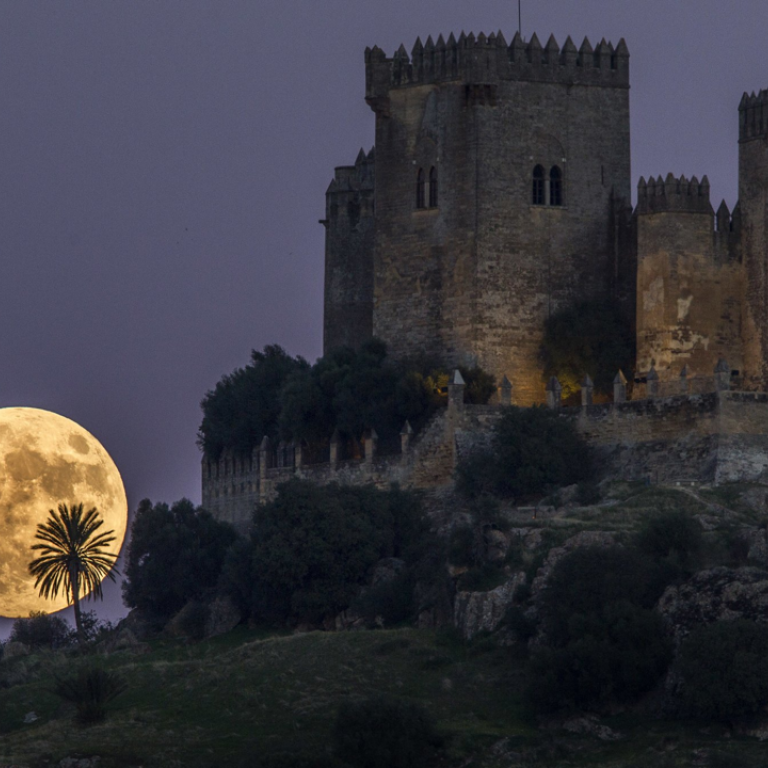
How the ‘supermoon’ got its name — along with 27 other weird names we have for full moons
The full moon was more super than it’s been since 1948 on November 13, making Earth’s satellite appear so big in the sky it almost looked fake.
People took incredible pictures from all over the world of the so-called supermoon. This one was a super duper supermoon, if you will, since the moon was on the closest point in its orbit of Earth at the same time it was full.
The term “supermoon” is relatively new, but Native Americans have had special names for full moons for centuries. While there are 562 federally recognised Indian tribes and communities across the US, many marked their calendars by the full moons, giving each one its own name and corresponding action.
Here are a roundup of 28 names we found for full moons, starting with the one that was the largest on November 13: the supermoon.
Supermoon
If you missed the supermoon on Sunday night, you can still catch it on Monday when the moon rises. It won’t be quite as big (because it technically won’t be full anymore), but it’ll still be closer than usual.
Supermoons — technically called “perigee-syzygy of the Earth-Moon-Sun system,” can cause stronger ocean tides and weather events.
The moon’s elliptical orbit can swing it between 225,623 miles and 252,088 miles from Earth. That 30,000-mile difference can make the supermoon look like it’s 14 per cent bigger and 30 per cent brighter than the full moon does when it’s furthest away.
This particular supermoon was extra special because it was full at the same time it was the very closest. That won’t happen again until 2034.
This year’s: November 14, 2016 (the closest supermoon since 1948), and December 13, 2016 (which won’t be quite as big as November’s)
November: Beaver Moon, Frost Moon
While this November’s full moon was also super, Native Americans called this month’s the beaver moon or frost moon because it’s typically when frost blankets the ground and the beavers are preparing for winter. It was the best time to set the traps to catch them for food.
The next one: November 14, 2016
December: Cold Moon, Long Night’s Moon
December has the longest nights of the year, and it’s cold. These ones are pretty straightforward.
The next one: December 13, 2016
January: Wolf Moon, Old Moon
In January, wolf packs howl at the moon and apparently would gather hungrily around Native American villages.
The next one: January 12, 2017
February: Snow Moon, Hunger Moon
February is in the depths of winter when snow blankets the ground and food is hard to come by. Because it’s a shorter month, some years February doesn’t have a full moon at all.
The next one: February 11, 2017
March: Worm Moon, Sap Moon, Crow Moon
March is the time when the worms come out of the ground, when you tap the maple trees for sap, and the crows’ cawing heralds the end of winter.
The next one: March 12, 2017
April: Pink Moon, Grass Moon, Fish Moon
The Pink Moon is named for the pink phlox flowers that are the first to bloom in the spring. The grass sprouts and the fish also come upstream to spawn.
The next one: April 11, 2017
May: Flower Moon, Planting Moon
The flowers bloom in May, and it’s also time to plant the crops.
The next one: May 10, 2017
June: Strawberry Moon, Rose Moon
June is when the strawberries are ripe, and the roses bloom.
The next one: June 9, 2017
July: Buck Moon, Thunder Moon, or Hay Moon
Deer start to grow their antlers this month, and there are often lots of thunderstorms.
The next one: July 9, 2017
August: Sturgeon Moon, Red Moon
Tribes in the Great Lakes knew this was the best time to catch sturgeon, an ugly (but hearty) fish. Some people think the moon looks reddish this month in the heat.
The next one: August 7, 2017
September: Harvest Moon, Corn Moon
Harvest Moon, one of the more commonly heard names, is the one that falls closest to the autumnal equinox in September (or October — the moon’s not always that precise).
It means it’s time to finish harvesting the corn and other crops for the winter!
Because this full moon rises with the setting sun, it looks larger than usual. These bright moonlit nights give farmers a little extra time to harvest their crops before the first day of fall on September 22.
The next Harvest Moon: October 5, 2017
October: Hunter’s Moon
October is usually the best month to hunt, when the animals are fattened up for winter and you can see through the trees that have lost their leaves.
The next one: October 5, 2017
Bonus name: Blue Moon
It doesn’t actually appear blue. A Blue Moon is just the name for the second full moon in a month or the fourth moon in a season.
The next one: January 31, 2018 (or May 18, 2019, depending on the definition you pick)

